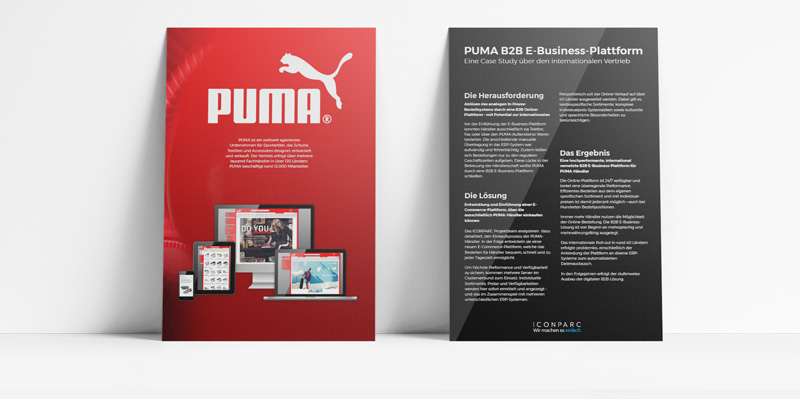
The term "digital transformation" describes the constant process of change that is based on digital technologies. This process, known as the "digital revolution", encompasses the entire society, especially companies from an economic point of view.
Read examples for
Short version of this text on Digital Transformation
Many business models have been created, supplemented or replaced by digital change, as this text illustrates by way of example. Since digital transformation is not a completed process, but a perpetual process, each company is faced with individual challenges regarding its own business model. These challenges have to be met from the upper management level. ICONPARC can help by providing a sustainable solution/platform, which is technologically able to withstand this continuous change and does not require constant new investments.
Digital change
Creation, supplementation and elimination of business models
Digital change has an impact on a wide variety of business models. Some new ideas have arisen, some have been supplemented, some have been replaced.
New business models thanks to digital transformation
One example of a completely new business model is the payment service provider Paypal, which operates exclusively on the Internet. Paypal makes it possible to process orders in online shops. Without the digital change, without the Internet and especially the "www" (world wide web) there would be no billion-dollar company today.
Supplement existing business models
One of the best-known players to exist thanks to digital transformation is amazon. In the late 1990s, the company initially only sent books over the Internet, adding the Internet to its bookstore distribution channel. Today, the mail order company offers just about everything.
A regional example of digital change are the public transport companies in major cities such as Munich: Via App, timetable information and paperless ticket purchases are possible, and the "counter" sales channel has been expanded or made unnecessary in some cases.
And banks have made it extremely rare to fill out remittance slips. The industry, which normally tends to be rather sedate, has realised that legally secure transactions must be able to be handled online, otherwise they will not survive on the market.
Elimination of business models
A prime example of business models that no longer exist are video stores. At that time, the prospective customer had to rent the film from the branch and watch it on the same evening if possible in order to save money, as otherwise penalty fees would have to be paid. In times of streaming providers like Netflix, Maxdome etc. this is over. Either by subscription or video on demand / price per piece, the user can watch the desired film whenever he wants, as often as he wants.
Preliminary conclusion
On one hand, digital change means that business models have changed dramatically. On the other hand, it has become much easier for users to compare providers with each other. The competition is usually just a mouse click away, which puts the customer in a much better business position. They expect fast turnaround times, smooth processing and convenient payment options. The unique selling proposition in the midst of all providers for the customer is now either the price, which can be compared extremely simply, or the service, thus accessibility, customer service, after sales service etc..
Read more:
Asserting yourself in digital change
Change must start at the top
But whose task is it to initiate digital transformation in one's own company? The process of digital change can only come from top management, because there must be a uniform approach for all departments. Anything else would be counterproductive. For example, marketing alone could not decide to establish an online shop without bringing process control and production on board. Or, for example, the sales department alone could not switch to a mobile solution for the field service without creating an interface with the IT for the office service or the service employees. Digital transformation is therefore a process in which the entire organization has to be "taken along". Individual solutions - regardless of whether they involve digitization or other processes that affect other departments - can only be the beginning of a larger strategy.
Case studies for successful digital transformation in the areas of
Digital Transformation: A Continuous Process
As already mentioned in the definition, digitisation is not a project with a clear start and end point. It is a process that is never finished. For many company managers, this fact often "smells" like permanent investment in the new digital architecture and infrastructure. This is partly true. There is no doubt that laws (e.g. the DSGVO) or technical revolutions (the emergence of smartphones and tablets) can also mean financial burdens for the organisation after "completion" of the digital solution. The core of such a solution, however, should continue to exist and be only conditionally renewable. This is where ICONPARC comes in.
ICONPARC offers sustainable solutions
ICONPARC has been involved in the digital transformation of companies for over two decades. The difference to others: Our solutions are sustainable and of high quality. This means that you can be sure that they will remain current and maintainable in five, ten and twenty years.
Read a technical statement about our
If, for example, you are successful with your international B2B E-Business platform, this does not immediately mean escalating additional costs for you, as our solutions are scalable. If you are followed by a "big number" with thousands, even hundreds of thousands of articles, ICONPARC makes daily care a breeze.
Of course, there are as many different needs as there are companies. And that's exactly what we specialize in: offering everyone the ideal solution, not an off-the-shelf solution, but a tailor-made answer to the questions that digital change has in store for you. Digital transformation does not only involve risks, but also enormous opportunities. ICONPARC helps to minimize risks and maximize opportunities.
Read examples from different
Contact ICONPARC and describe your project. We deliver the timetable and the implementation for your business.






























